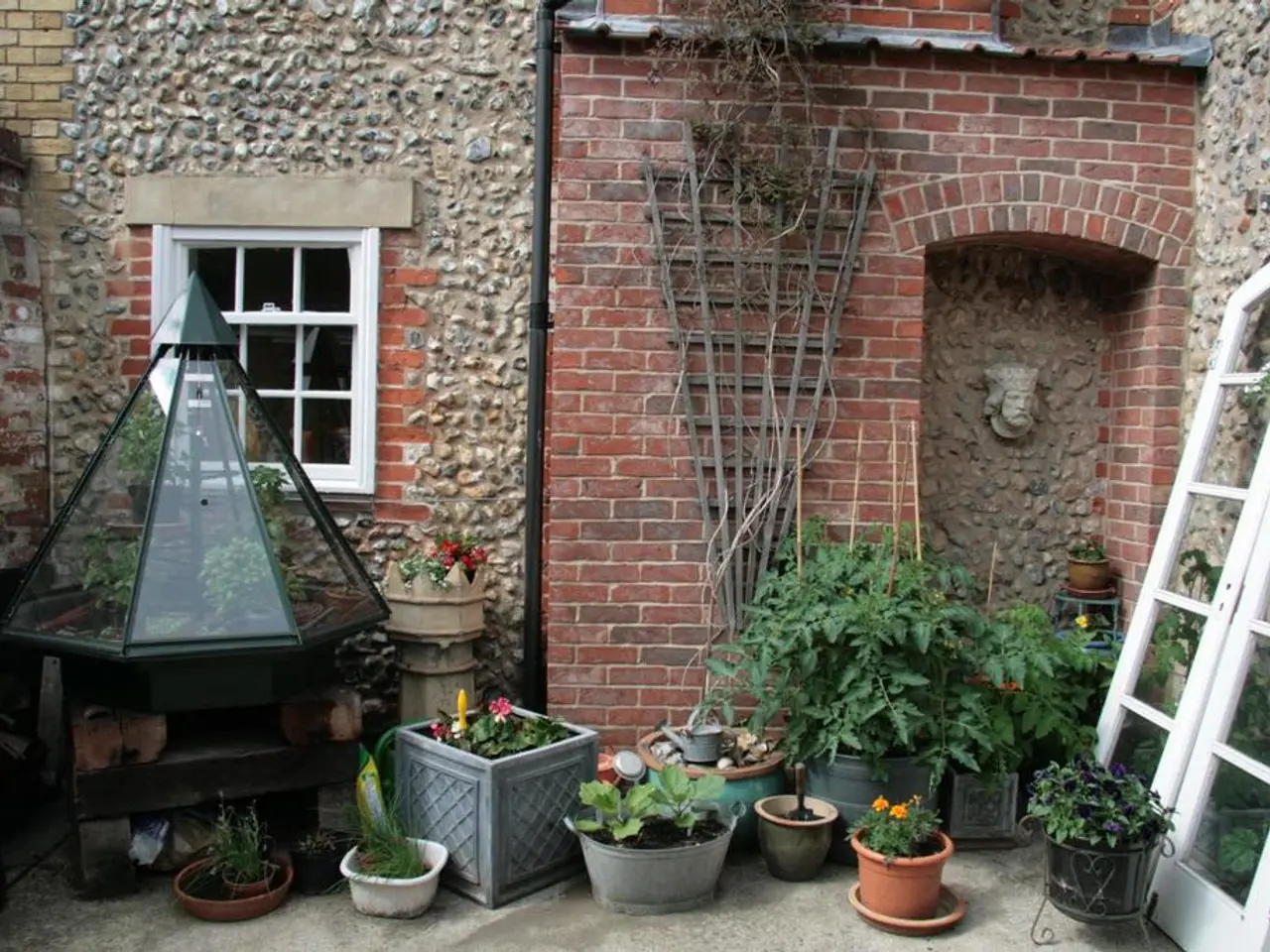Guide on Indoor Sowing of Zinnia Seeds
In the heart of winter, it's easy to dream of the vibrant colours that will grace your garden come summertime. One such plant that promises a riotous display of colour is the zinnia. This article offers a simple, step-by-step guide on how to sow zinnia seeds indoors, ensuring a headstart on blooming once transplanted outdoors.
Materials Needed - High-quality organic potting mix or seed starting mix that drains well and is fertile - Seed trays, pots, or cells with drainage holes - Zinnia seeds - Watering spray or gentle watering tool - Grow lights or access to a sunny window - A warm indoor location maintaining about 65–75°F (18–24°C)
Steps
- Prepare the soil: Fill seed trays or pots with the seed starting mix, ensuring it is moist but not soaked.
- Sow the seeds: Plant zinnia seeds about 1/4 inch deep (about half a centimeter) in the soil. You can place 1-2 seeds per cell or pot. Lightly press the seeds into the soil and cover with a thin layer of potting mix.
- Provide warmth: Keep the seed containers in a warm place ideally between 65°F and 75°F (18–24°C) to encourage germination.
- Water carefully: Keep the soil consistently moist but not waterlogged. Use a spray bottle to mist the surface so the seeds aren’t displaced.
- Light: Place seeds near a sunny window or use grow lights to give them plenty of bright, indirect light for at least 12-14 hours daily.
- Germination timeframe: Seeds typically sprout within 5-10 days under these conditions.
Care after Germination - Thin seedlings so the strongest remain about 6 inches apart if grown in larger pots. - Continue to provide ample light and keep the soil moist. - Once seedlings have developed several true leaves and outdoor conditions are warm and frost-free, gradually harden off (acclimate) seedlings before transplanting outside.
By following these steps, you'll be well on your way to enjoying a beautiful array of zinnias that make excellent cut flowers. These versatile plants are suitable for borders and filling gaps in your garden, providing a splash of colour from midsummer until the first frosts.
It's also worth noting that growing zinnias is not the only way to ensure an abundant supply of flowers for your home. Other cut flowers can be grown from seed as well, adding to the variety and beauty of your garden.
When signing up for our newsletter, please take a moment to read our site's terms and conditions and privacy policy. Your privacy and security are important to us. Furthermore, our site is protected by reCAPTCHA and abides by the Google Privacy Policy and Terms of Service.
Happy gardening!
Implementing these steps in your home will help you grow zinnia plants, ideal for your home-and-garden and lifestyle, offering a vibrant display of colors during summertime. As you cultivate your zinnia garden, remember that other home-grown cut flowers can also contribute to the charm of your home lifestyle, creating a picturesque home-and-garden oasis.






